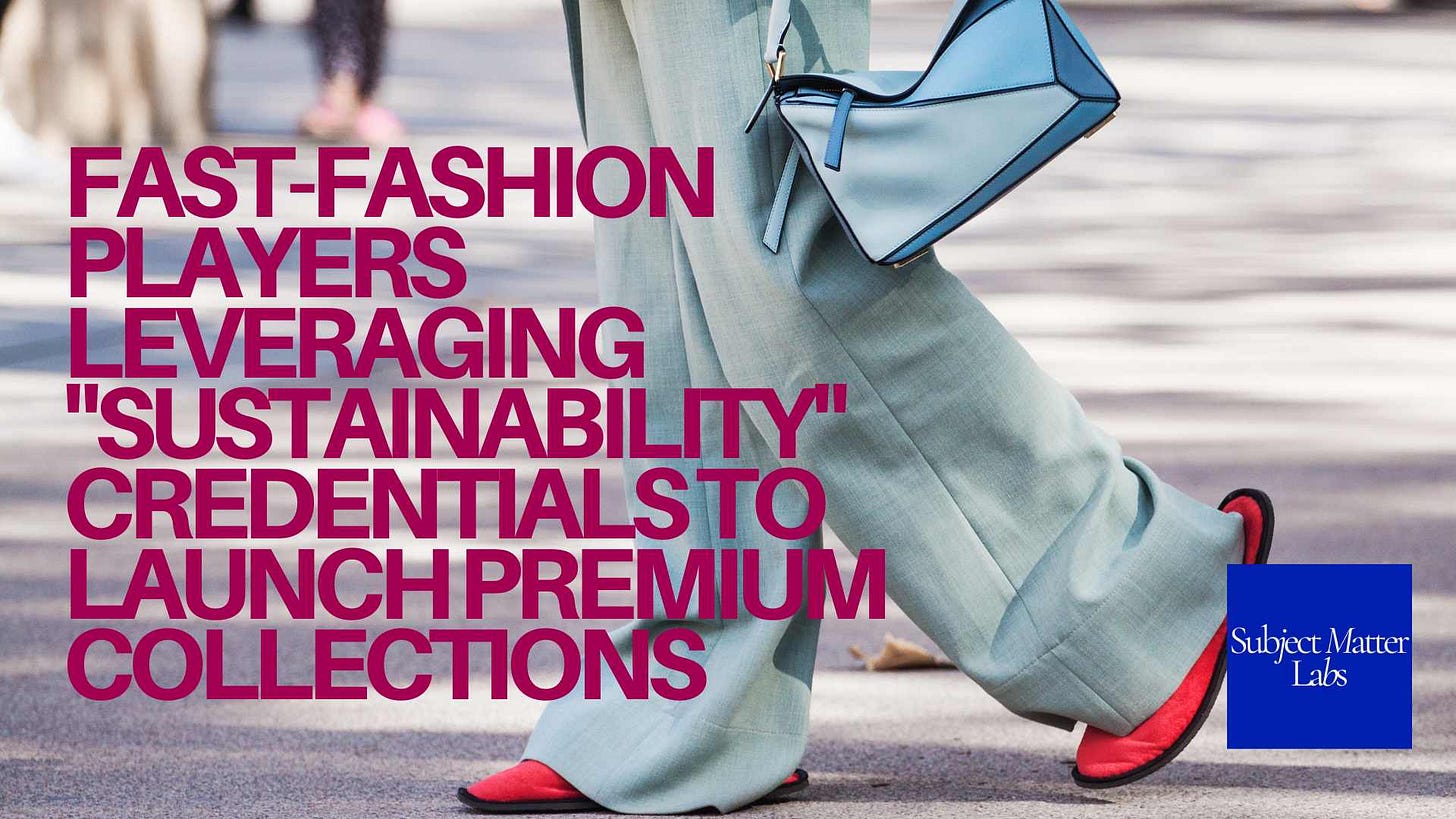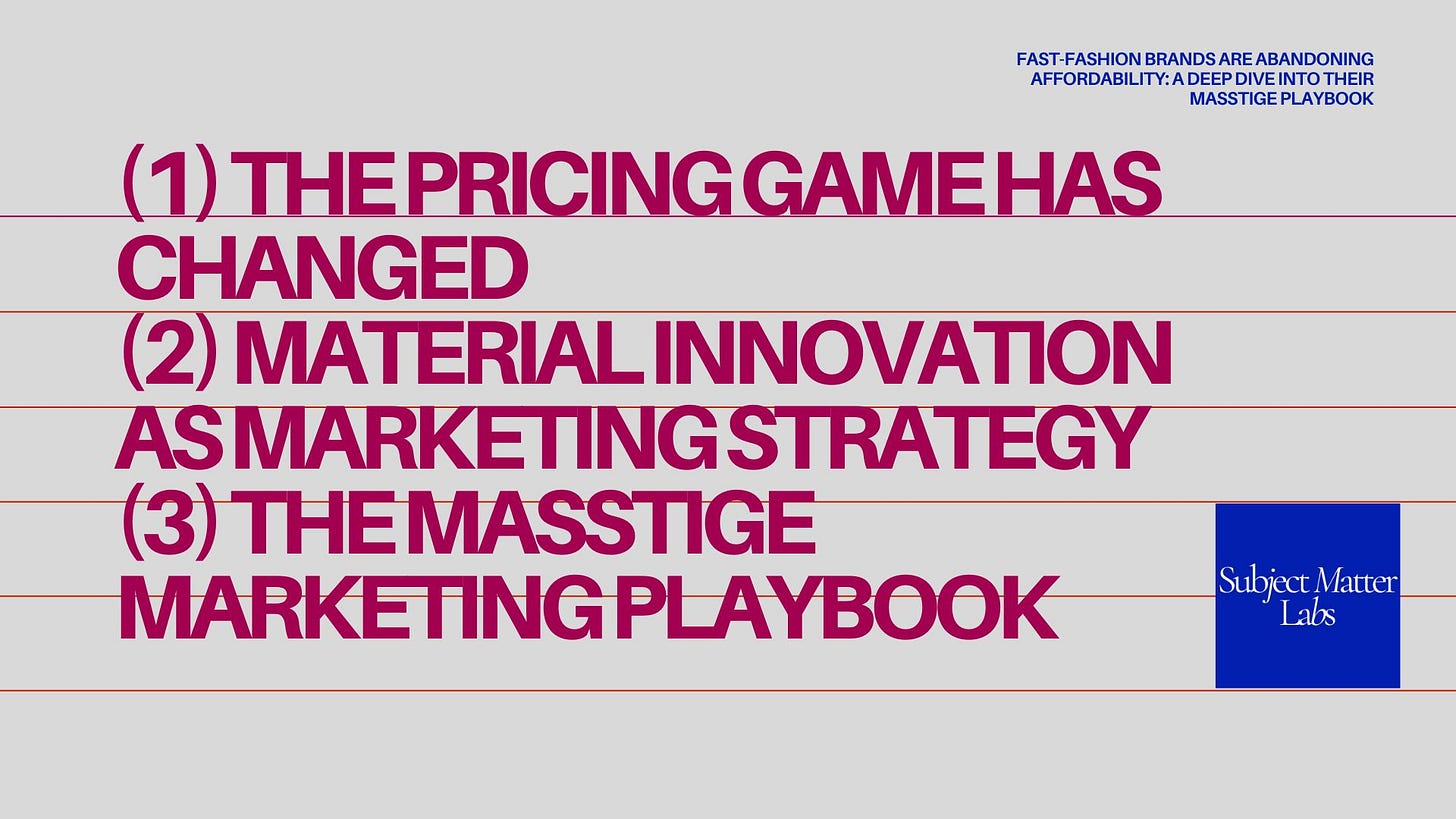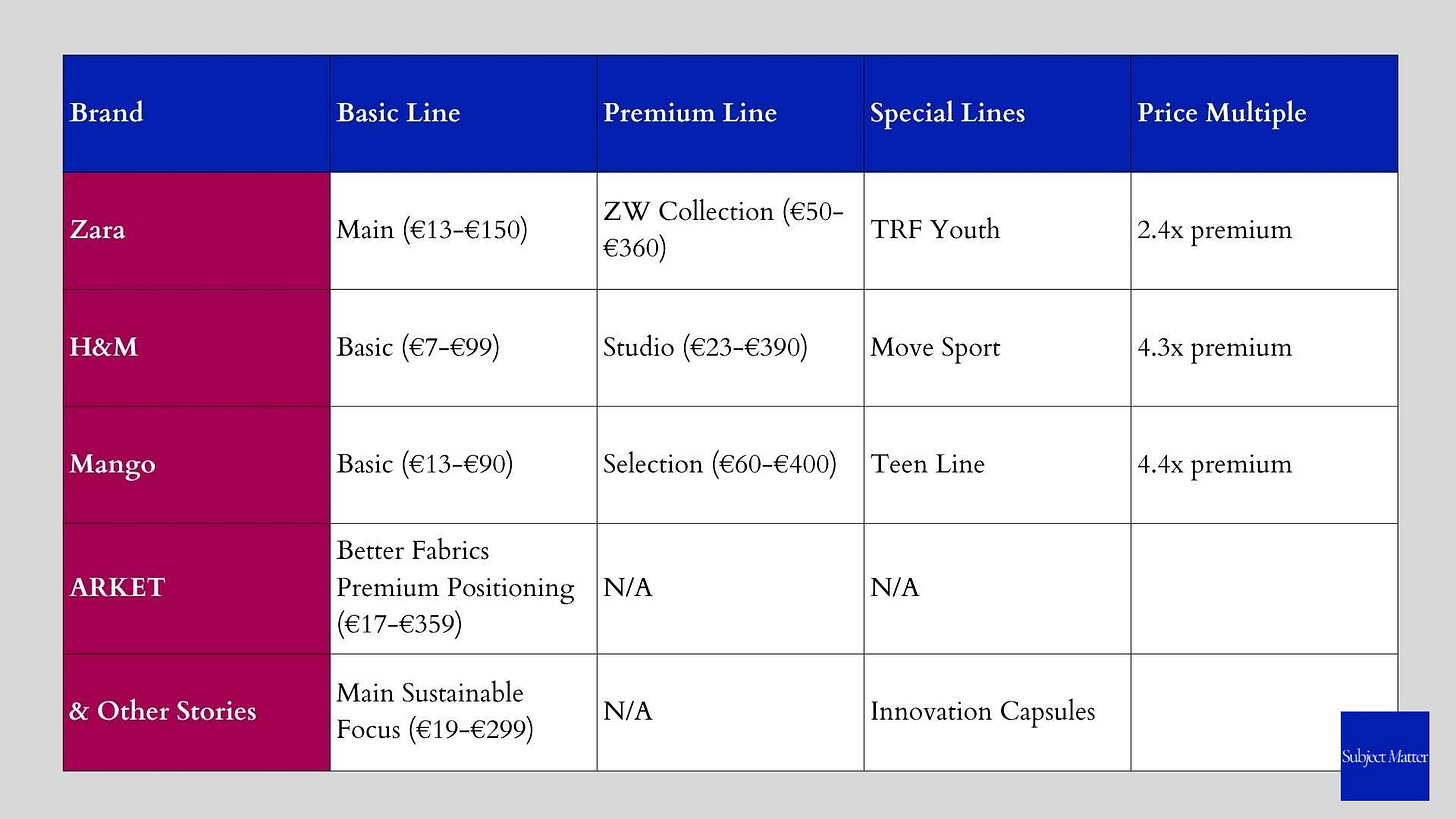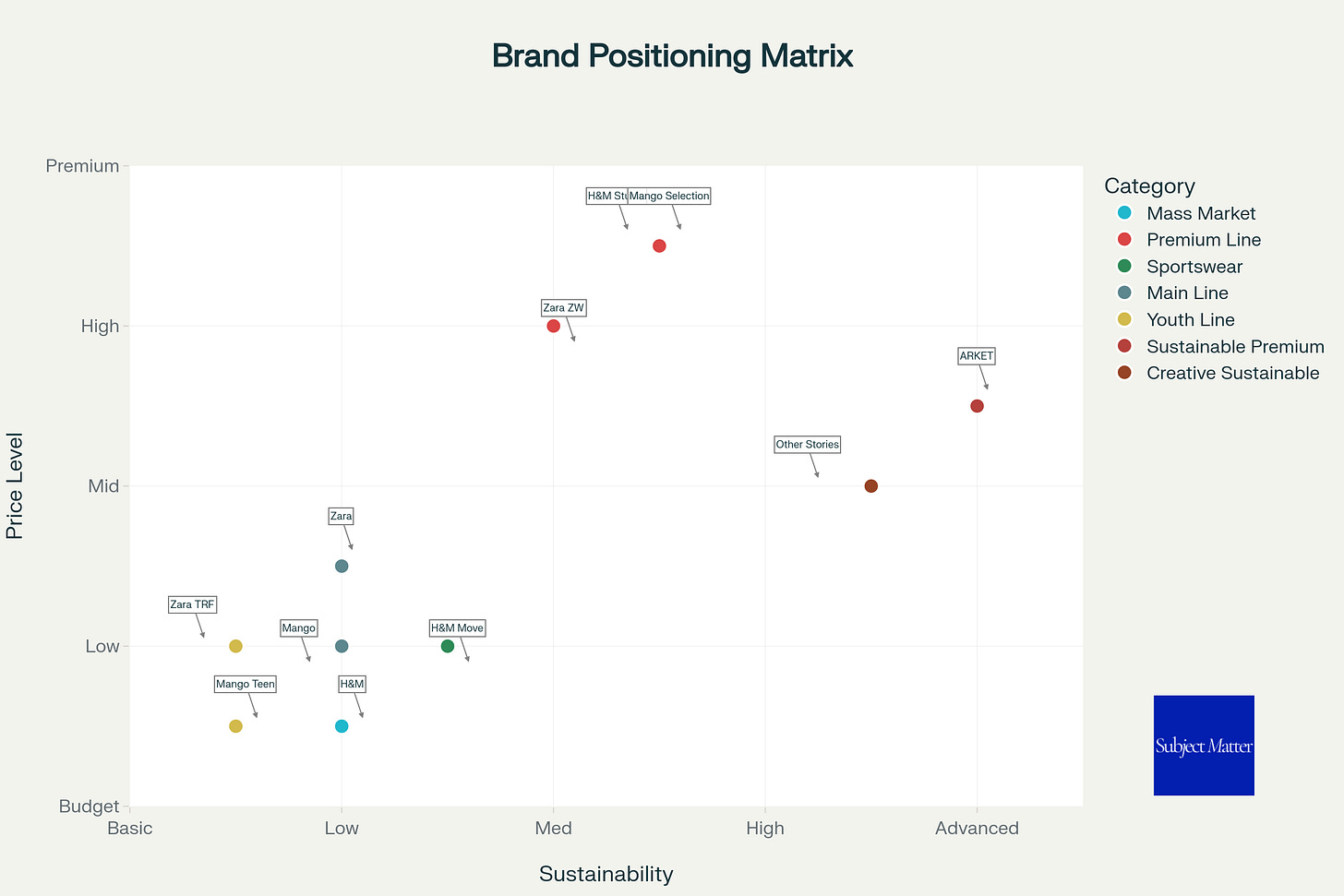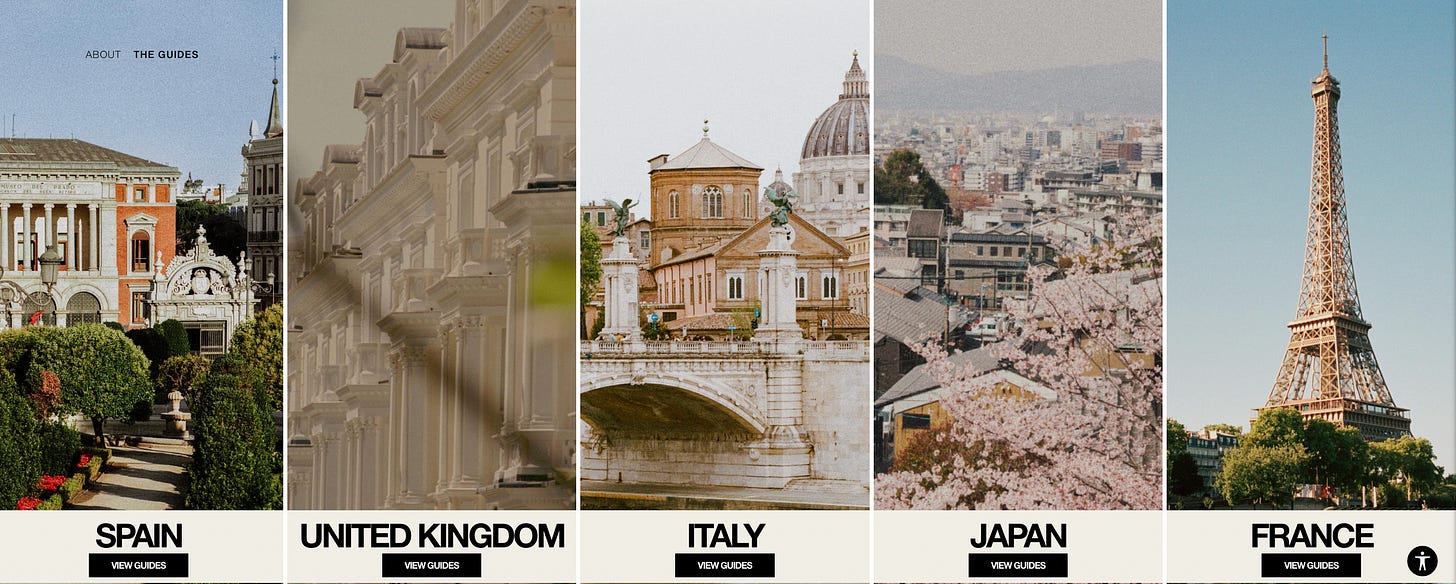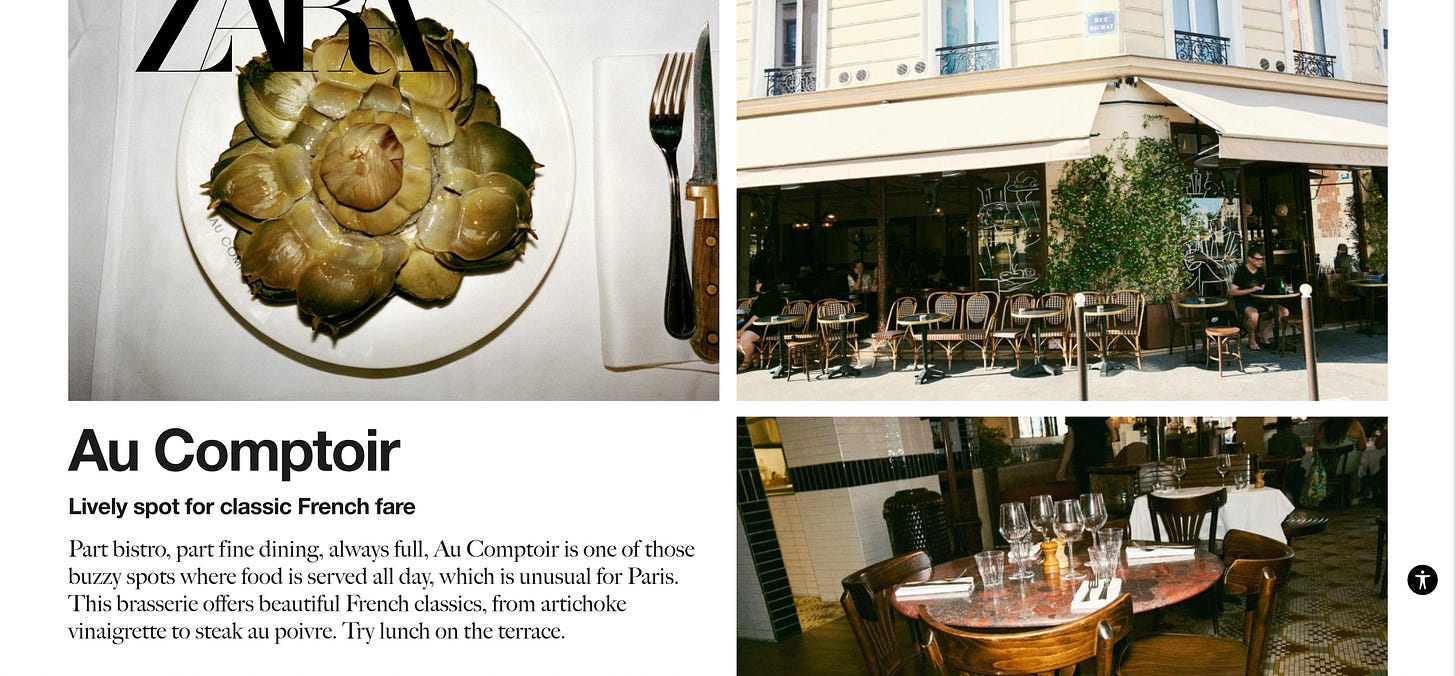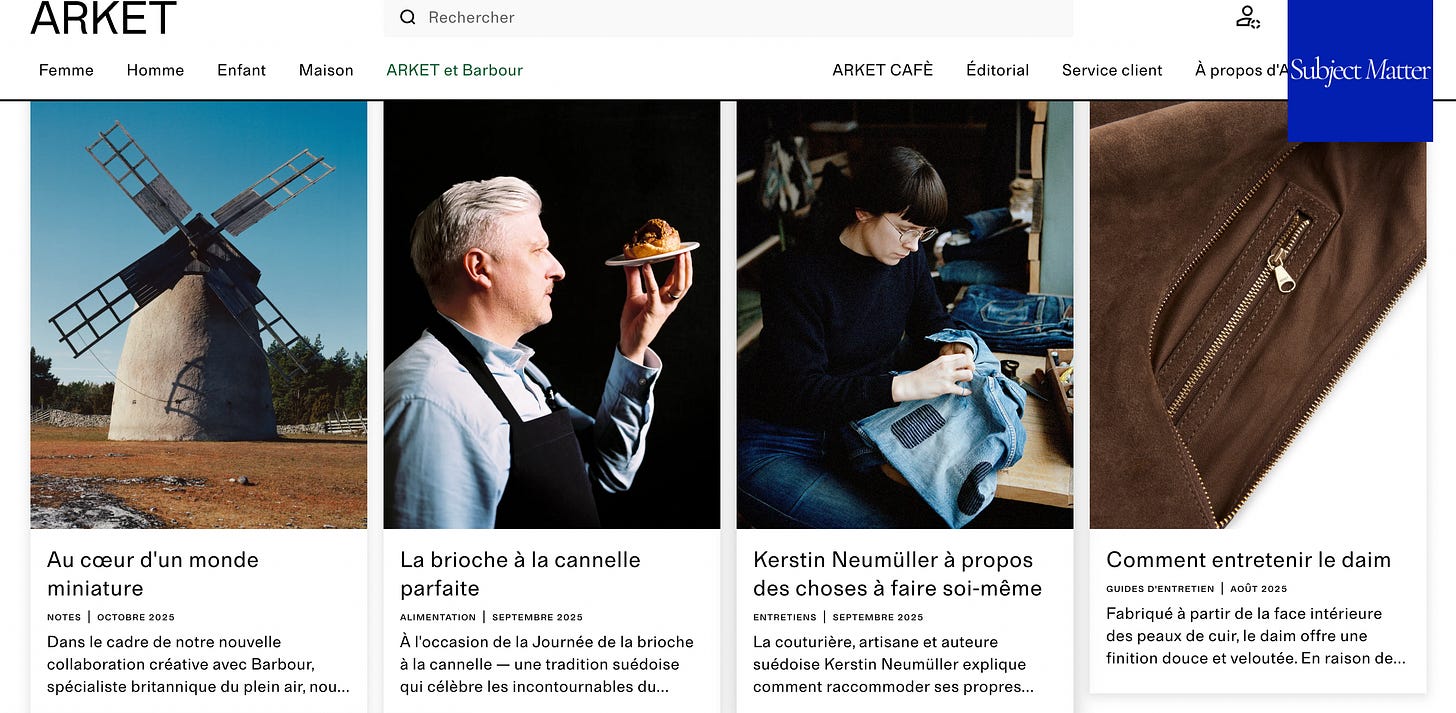Fast-fashion Players Are Leveraging "Sustainability" Credentials To Launch Premium Collections
A closer look at price inflation, marketing spin, and the fading promise of accessible quality over the last few years
Earlier this month, I noticed that &Other Stories had revamped their website to look high-end with large images bleeds, edgy styling and new brand assets and layouts. It occurred to me that I’ve seen something like this before.
Over the last few years, fast fashion brands have been uplifting their fast-fashion image by creating “sustainable” lines, whiles slowly incresaing their prices and creating masstige/premium collections, leveraging the growing demand for sustainability amidst the consumers.
These premium lines are created by segmenting fabric types and clever marketing strategies, slowly altering the perception and value proposition for shoppers.
For retailers like Zara and H&M, the default lines consist of synthetic blends as their go-to option, the really good stuff - pure linen or organic cotton - get saved for their fancy “special collections” or premium “sustainable” sub-brands that come with a hefty price tag.
The bottom line is that real natural fibre clothes, such as 100% cotton, linen, wool or silk, have become a pricey add-on within the same shops.
In this deep dive, we aim to investigate the correlation between fabrics, price and perception of value within the fast-fashion landscape.
#1 The Pricing Game has changed
A couple of trends on pricing that are rapidly changing fast fashion landscape:
Coming in of Shein as a big player in the fast-fashion landscape means that these brands cannot really increase pricing and have to stay competitive (infact might have to lower pricing to match the Shein price points).
The creation of these premium lines with ever-growing price tag is relying on the growing demand for sustainability. Eco-friendly and high fashion credentials are extremely important for premium positioning.
A shift towards “timeless” collections and longer product cycles is emerging as a counterweight to hyper-fast micro-trends, potentially supporting higher, more stable price points on certain SKUs.
Data-driven dynamic pricing: Fashion retailers will start to leverage AI-powered systems soon. That means, automatic adjustment of prices based on demand, competitor moves, and inventory, enabling more responsive margins and improved sell-through rates.
#2 Material Innovation as Marketing Strategy
While Zara and H&M are still monetising immediacy; Arket and &Other Stories commercialise timelessness, appealing to values-based consumers willing to pay more for emotional and ethical reassurance.
Three tiers emerge in this landscape:
Timeless pieces in high-quality facbrics: Leader in this space Arket consists of collectections in 55% cotton, 15% wool, emphasis on natural fibers.
New Material Innovation: &Other stories has launched collections in MIRUM® (bio-based leather alternative), CIRCULOSE® (recycled textiles) and recycled sterling silver from urban mining.
Zero Waste collection: Zara’s ZW boasts of stylish pieces at an average price that is 2.5x premium from their main collection.
Growing acceptance of higher prices for sustainable materials has led to fast fashion brands leveraging sustainability to feed into positioning (see #3 below) and pricing (see #1 above)
#3 The Masstige Marketing Playbook
All fast fashion brands have deployed Premium lines like Studio (H&M), ZW (Zara), and Selection (Mango) are photographed like the pages of a high-fashion editorial, precise styling, dramatic contrasts, and minimalist settings that let high-fashion styling and lifestyle aspiration take center stage.
Zara’s attempt to create editorial reflections is also an interesting way to bring the culture element into the spotlight.
By contrast, the core ranges, think Main H&M, Zara Basic, Mango Basic, speak a more straightforward visual language. Here, photography is product-first, built for volume and clarity rather than artistry, favoring simple backgrounds and clean, functional composition.
Meanwhile, sustainability-led labels such as ARKET and & Other Stories bring their own distinct visual signatures: Nordic restraint meets poetic storytelling. ARKET leans into the purity of natural light and serene minimalism, while & Other Stories lets creativity run freer - textures, materials, and emotion blending to express values of the brand.
At Subject Matter Labs, we unpack what makes campaigns click — stories of creativity, craft, and connection shaping brand culture today. From exploring the art behind marketing to sharing the makers’ journeys on our podcast, we dig into the heartbeat of how ideas move the world.
Through our advisory, we partner with small and medium brands to turn purpose into presence and campaigns into communities.
If the story spoke to you, pass it on — the best ideas grow when shared.



